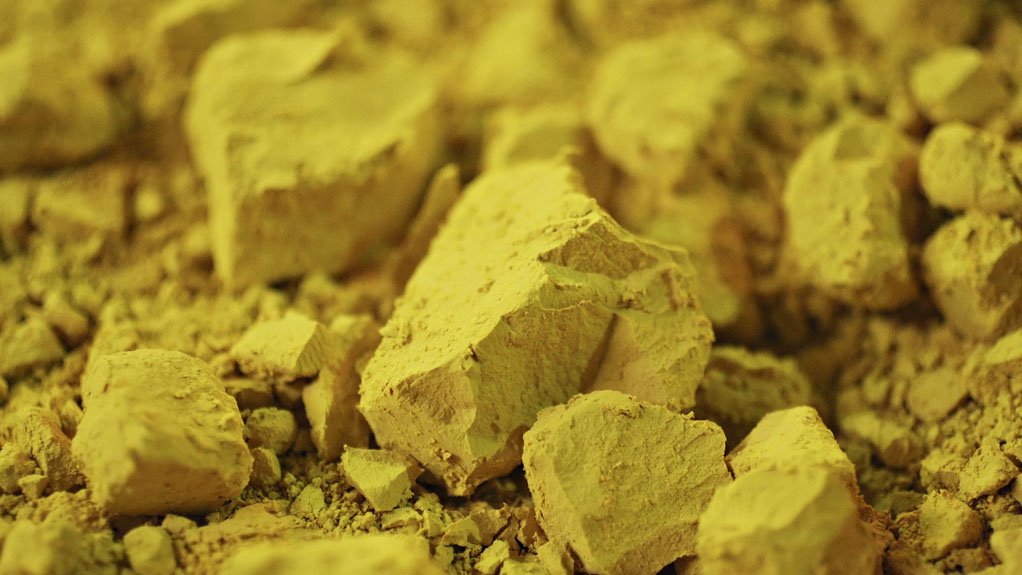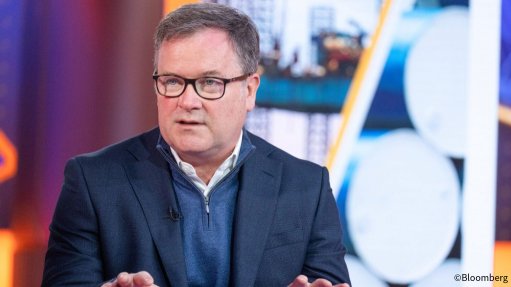Uranium price to continue to recover as demand grows


IN DEMAND Demand for uranium is forecast to rise from about 180-million pounds of triuranium octoxide in 2016 to between 220-million pounds and 260-million pounds by 2025
The outlook for uranium is increasingly positive following evidence of a recovery in the commodity’s price at the end of last year and with long-term demand expected to grow, says Canadian mineral resources company GoviEx Uranium CEO Daniel Major.
“The last few years have been extraordinarily difficult for the uranium industry and 2016 was no exception. The spot price fell from $34.70/lb of triuranium octoxide (U3O8) in January to $18/lb in November, decreasing nearly 50%. This price decline was against a background of sizeable inventories, covered contracts and excess enrichment capacity. In December, however, we started to see the first signs of the long-expected uranium price recovery.”
He highlights that the spot price closed the year at $20.44/lb of U3O8 – a 20% increase on last year’s low. “Producers cannot make money at the current uranium spot price and we, thus, expect long-term demand for uranium to grow, with demand forecast to rise from about 180-million pounds of U3O8 in 2016 to between 220-million pounds and 260-million pounds by 2025 based on the lower and upper case scenarios. In China and India, the forecast is for a planned increase in nuclear capacity from 35 GW of electric capacity (GWe) to 190 GWe in 2020.”
GoviEx executive chairperson Govind Friedland notes that the US and Europe have also sent clear signals that nuclear energy will be part of their respective long-term clean energy strategies and, most importantly, must be commercially recognised as such in a way that is similar to heavily subsidised renewable-energy sources.
Meanwhile, Japan is moving forward, with some 20 reactors in the approval process. It is also becoming more evident that, while there are sizeable inventories, they are not liquid, with the utilities holding them for expected future demand.
On the supply side, Friedland explains that mined uranium is expected to decline from the current 160-million pounds of U3O8 to about 145-million pounds of U3O8 by 2025, unless new mines are developed. However, with the all-in breakeven cost for uranium mines estimated at between $40/lb of U3O8 and $50/lb of U3O8 over this same period, it is clear the uranium price must be significantly higher to incentivise this new required production.
“These vectors point to a looming supply gap coming in the next three to five years and, as an industry, uranium miners and developers will be challenged to respond.”
Major says GoviEx closely followed these market, commodity and demand dynamics in 2016 with a view to positioning itself as a key producer for the next development cycle. One of its main priorities for 2016 was to conserve capital while uranium prices hit a 13-year low. The company took steps to cut expenditure across the board, while adopting a strategy to be the consolidator of what it views as the most viable projects in Africa. It also continued to focus on initiatives aimed at reducing the incentive price required for the development of its flagship Madaouela project, in Niger.
The company attained a major milestone last year with the issuance of a mining permit for its Madaouela tenement. The project is essentially development ready; however, GoviEx is working continuously to improve the cost structure for the asset.
“We have placed a priority on keeping costs low in 2017, while increasing the value or beneficiating our portfolio of uranium assets and positioning them for development,” says Major. He highlights that drilling at the Miriam deposit at the Madaouela project will focus on increasing the resources amenable to openpit mining. If successful, this is forecast to reduce capital costs in the first five years, decrease mining costs and considerably simplify the project to a Phase 1 openpit, further reducing risk for debt providers and potential offtake and equity partners.
Meanwhile, in Zambia, the company is working to re-examine project economics to better understand the commercial requirements to incentivise the future development of its Matunga project.
GoviEx is a participating sponsor at this year’s Investing in African Mining Indaba, in Cape Town, running from February 6 to 9 at the Cape Town International Convention Centre.
Comments
Press Office
Announcements
What's On
Subscribe to improve your user experience...
Option 1 (equivalent of R125 a month):
Receive a weekly copy of Creamer Media's Engineering News & Mining Weekly magazine
(print copy for those in South Africa and e-magazine for those outside of South Africa)
Receive daily email newsletters
Access to full search results
Access archive of magazine back copies
Access to Projects in Progress
Access to ONE Research Report of your choice in PDF format
Option 2 (equivalent of R375 a month):
All benefits from Option 1
PLUS
Access to Creamer Media's Research Channel Africa for ALL Research Reports, in PDF format, on various industrial and mining sectors
including Electricity; Water; Energy Transition; Hydrogen; Roads, Rail and Ports; Coal; Gold; Platinum; Battery Metals; etc.
Already a subscriber?
Forgotten your password?
Receive weekly copy of Creamer Media's Engineering News & Mining Weekly magazine (print copy for those in South Africa and e-magazine for those outside of South Africa)
➕
Recieve daily email newsletters
➕
Access to full search results
➕
Access archive of magazine back copies
➕
Access to Projects in Progress
➕
Access to ONE Research Report of your choice in PDF format
RESEARCH CHANNEL AFRICA
R4500 (equivalent of R375 a month)
SUBSCRIBEAll benefits from Option 1
➕
Access to Creamer Media's Research Channel Africa for ALL Research Reports on various industrial and mining sectors, in PDF format, including on:
Electricity
➕
Water
➕
Energy Transition
➕
Hydrogen
➕
Roads, Rail and Ports
➕
Coal
➕
Gold
➕
Platinum
➕
Battery Metals
➕
etc.
Receive all benefits from Option 1 or Option 2 delivered to numerous people at your company
➕
Multiple User names and Passwords for simultaneous log-ins
➕
Intranet integration access to all in your organisation



















